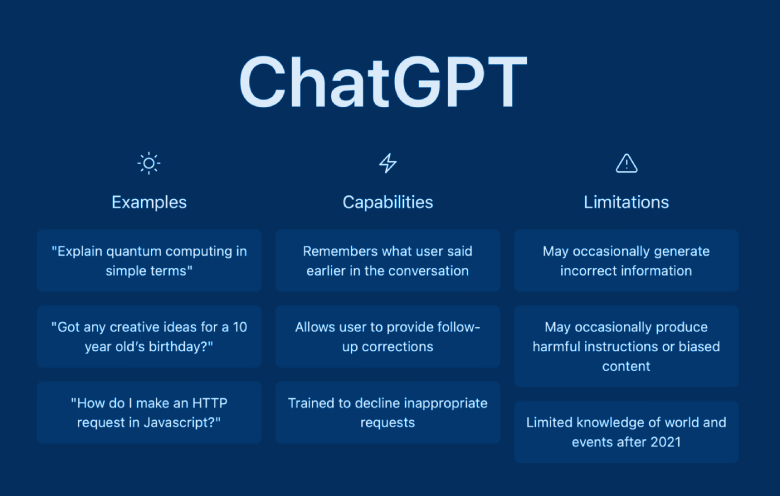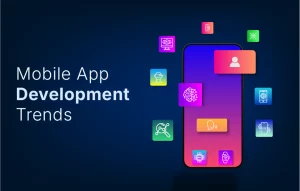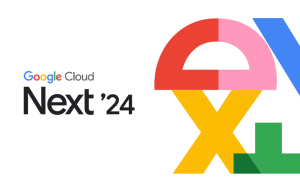This blog aims to spread awareness around AI writing tools, GPT-3 and ChatGPT. If you are curious about it, this blog is worth giving a shot at.
Why is the popularity of AI writing tools growing?
What’s the purpose of artificial intelligence (AI) writing tools and why suddenly there is lots of buzz around them? Some say it’s to enable faster content generation and saves time and money for organizations. But is that all there is to it? Are speed, time and cost-efficiency the only things AI writing tools bring to the table?
Perhaps the true power of AI writing tools lies in their ability to act as a catalyst for generating smarter, more engaging and natural conversations.
What does that mean?
For example, I asked ChatGPT, ‘What would you do if you could land on Mars?’
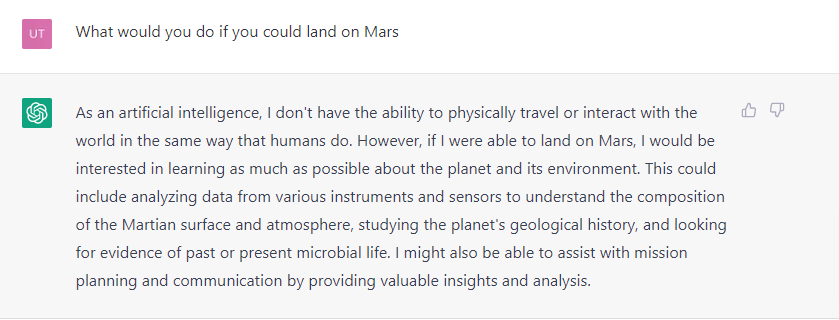
Doesn’t the detailing in an answer sound more thoughtful, engaging and natural? Above all, it generates such responses in seconds. What else do AI writing tools offer?
It clearly helps in shifting the power away from industry experts into anyone’s hands. AI writing tools make writing democratic. Sure, there is a long way to go. Imagine its impact on the world of content creation. Let’s pick up one of the content types, blogs.

Today’s blogging universe is on a roll with:
| Duration | No. of blogs published |
| Every second | 70 |
| Every day | 6 million |
| Every week | 42.3 million |
| Every month | 181.4 million |
| Every year | 2.2 billion |
Undoubtedly, these numbers are bound to grow – maybe to 7.5 million a day, meaning 87 blogs every second. This indicates a significant pressure on marketers to create content that spreads awareness and helps in decision-making.
This is one aspect of the AI writing tool. However, it popularizes AI writing tools like there is no tomorrow.
Let’s dig into the potential of AI writing tools with ChatGPT – an AI-powered chatbot created by OpenAI.
OpenAI pioneered building deep learning-based large language models for natural language processing.
Some terminologies to be familiarized with for a better understanding
Company: OpenAI, a research firm specializing in AI, particularly in building generative models.
Goal: To deliver the 21st century’s most transformative technology.
Technology: GPT (generative pre-trained transformer) technology forms the building block of most of the state-of-the-art NLP architectures.
Language models: Models that can predict your next words based on instructions you provide and that have been explicitly trained for conversations.
Zero / One / Few shots learning: Refers to the model’s ability to learn a new task by seeing zero / one / few examples for that task.
Why ChatGPT?
OpenAI’s GPT technology, backed by transformers with zero/one/few shot tasks, started the swell of AI-generated content. In the realm of AI writing tools, ChatGPT garnered a million users in 5 days. Since its launch on November 30, it hit a million users mark, making it the fastest (see the image below).
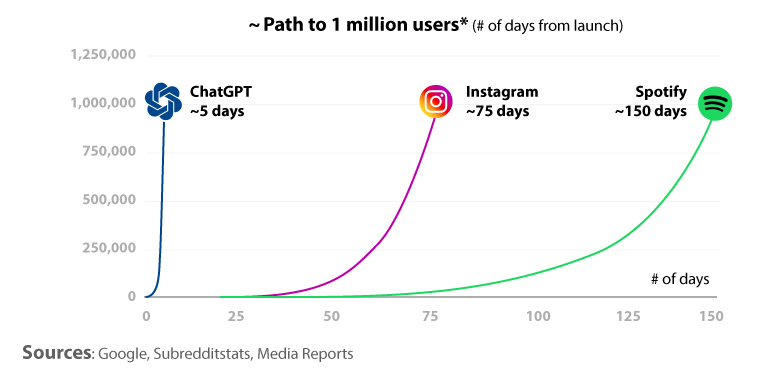
There are, of course, more reasons for this. We will look at them one-by-one, starting with defining ChatGPT.
What is ChatGPT?
A new artificial intelligence chatbot, ChatGPT, answers questions and takes directions from users in a conversational, human-like way. ChatGPT is not only conversational, but well-versed in a wide range of topics. It can create code, social media posts and even television show scripts.
In a blog post announcing the launch of ChatGPT, OpenAI stated that its “dialogue format makes it possible for ChatGPT to answer follow-up questions, admit its mistakes, challenge incorrect premises and reject inappropriate requests.”
ChatGPT, a new dialogue language model (LM), was trained with a technique called reinforcement learning from human feedback. Human trainers teach LM. They would rank the chatbot responses manually and feed them to the LM so the chatbot can learn to give required responses.
How ChatGPT works or what makes ChatGPT the world’s smartest chatbot
To understand how the world’s smartest chatbot, ChatGPT, works, let’s first understand why GPT-3 is a revolutionary LM and its mechanics.
Why GPT-3 is a revolutionary language model?
OpenAI researchers developed complex LMs (GPT-1, GPT-2 and GPT-3) by increasing training petaflop(s) per day that produce human-like speech, as shown below.
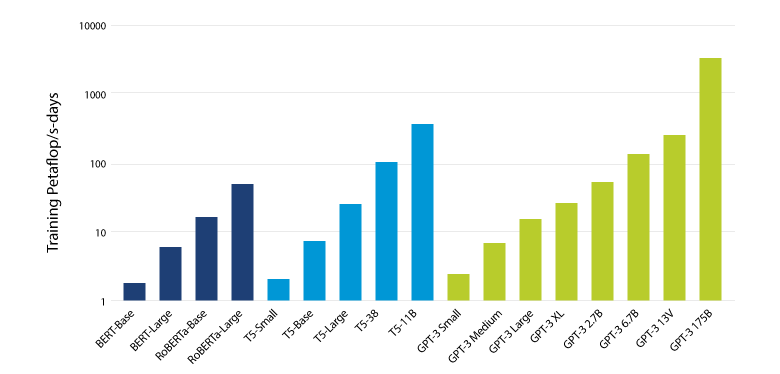
Total compute used during GPT-3 training. Source: Research article
As the seminal research article describes, OpenAI researchers trained GPT-3 with 96 attention layers, batch size of 3.2M, 175B (~500GB in size) parameters and the datasets – consisted of typical common crawl, Wikipedia, books and some additional data sources. The training datasets mammoth size is what makes GPT-3 a revolutionary language model.
The mechanics of GPT-3
GPT-3 uses large transformer architectures to improve text synthesis and downstream performance across multiple tasks. In-context learning refers to feeding multiple examples to the model within parameters. With in-context learning, the ability of GPT-3 to imbibe skills and understand tasks scales massively.
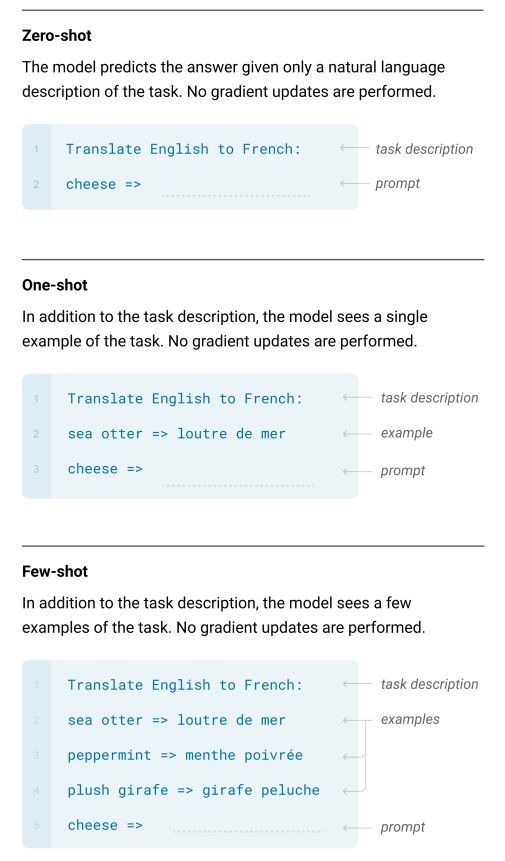
Three-settings OpenAI explored for in-context learning. Source: Research article
With this approach, there is no need to follow traditional fine-tuning (gradient updates).
Zero-shot learning aims to find instances that were not seen during training. Now, it is up to the machine to do the job.
One-shot learning is different from zero-shot learning just with the number of seen instances, which in this case will be one.
Few-shot learning suggests using a small amount of training data to train a learning model. This contrasts with the standard practice of using an enormous amount of data.
Researchers trained GPT-2 with a zero-shot setting. Meaning, the LM’s ability to perform certain tasks is tested directly after optimizing for the stated language modeling objective. On the other hand, they trained GPT-3 with one-shot and few-shot settings along with the zero-shot. This enabled GPT-3’s learning ability to grow significantly compared to most task-specific fine-tuning models.
How it’s unparalleled learning ability help different businesses? Let’s explore it through use cases.
ChatGPT use cases
Since OpenAI made ChatGPT accessible for all to enhance its training, it went viral to the point where even Elon Musk tweeted about it.
Lot of people stuck in a damn-that’s-crazy ChatGPT loop
— Elon Musk (@elonmusk) December 1, 2022
ChatGPT has impressed many businesses with its capabilities. Below are some business use cases for ChatGPT.
Blog posts
Producing engaging blog posts consistently is a big challenge for marketers. ChatGPT does it with Flash speed.
Using OpenAI's new ChatGPT to write a tutorial blog post on plotting with Pandas/Matplotlib, section-by-section, with conversational feedback. (1/3) pic.twitter.com/RxL61OI3H2
— Riley Goodside (@goodside) December 1, 2022
Podcasts scripts
— ChatGPT ✨ (@ChatGPTBot) December 15, 2022
Develop AI program
— ChatGPT ✨ (@ChatGPTBot) December 21, 2022
Form an opinion
— ChatGPT ✨ (@ChatGPTBot) December 10, 2022
Demand any creative output
— Ben Tossell (@bentossell) December 1, 2022
You think of – question-answers, search queries, writing dialogues, creating emails and generating recipes – ChatGPT responds. Above all, it produces human-like smarter, engaging and natural content.
Then, what are its limitations?
ChatGPT limitations
ChatGPT can generate almost any content type on any topic because of its training and availability to the public. However, it’s crucial to realize ChatGPT’s limitations for anyone interested in creating quality content that ranks on search engines.
Google ranking is the biggest limitation
On April 01, 2022, during Google SEO Hangout, John Mueller, senior webmaster trends analyst, said:
“My suspicion is that maybe the quality of content is a little bit better than the really old-school tools, but for us, it’s still automatically generated content, and that means for us, it’s still against the Webmaster guide. So, we would consider that to be spam.”
With this comment, John left no room to wonder. After all, Google has long advocated for human-generated content. If Google approved and ranked AI-generated content, it would lose the quality standard that has given it a market share of more than 90%.
Google updated its auto-generated content section on the developer page about spam in November 2022 to clarify its point.
“Spammy automatically generated (or “auto-generated”) content is content that’s been generated programmatically without producing anything original or adding sufficient value.”
By this, Google clarified that automatically generated content doesn’t make it spammy. The content becomes problematic when it lacks all value-adds and has a spammy vibe.
ChatGPT is unaware of the events that happened after 2021
ChatGPT needs to be made aware of the content created after 2021. ChatGPT in its current form may not be useful if an individual needs up-to-date or fresh content.
Programmed to avoid specific content type
ChatGPT, for example, is specifically programmed not to generate text containing violence, explicit sex, or potentially harmful content, such as instructions on how to build an explosive device.
ChatGPT requires specific instructions
The more specific instructions given to the ChatGPT, the more sophisticated the output. This is a strength as well as a limitation to be aware of.
The fewer instructions in the content request, the more likely the output will be like that of another request. In all, it’s a fact that similar requests generate similar articles.
Let’s wrap up this blog with some useful tips for making the best use of ChatGPT.
Useful tips to make the best use of ChatGPT
Give detailed instructions
Ensure that you provide accurate information about your questions so that ChatGPT can provide the best possible response.
Consider the context
To ensure a cohesive dialogue, make sure that your request fits into the current context.
Avoid asking redundant follow-up questions and repeating questions in the same dialogue
This will impede the learning of the chatbot and increase the likelihood of ChatGPT providing the same answer multiple times.
Review the bot’s response thoroughly
Before proceeding, carefully examine the bot’s response for relevance and reasonableness. If the answer is irrelevant, pose a new question to the bot with the same context.
Are you excited to experiment with your crazy, groundbreaking and fun content creation ideas using ChatGPT?
Go ahead! Explore ChatGPT.
How about starting with ‘What would you do if you could land on Mars?’


